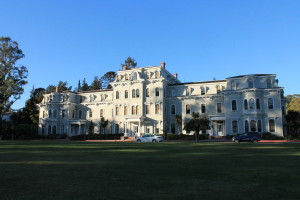
California is currently in its worst drought on record. In 1990, the time of the strike at Mills College, California had major drought conditions and was cited by the The Los Angeles Times as the fifth driest year in the 20th century. The 2014-15 drought is more severe today because of the rain season ending earlier and the snow melt from the Sierra Nevadas only occurring for a short time. Normally, snow melt from the Sierras provides California enough water for agricultural, commercial and municipal use in the summer.
California is the most metropolitan state in the nation with more than 80 percent of the population living in areas of more than one million people. According to the LA Times, 1990 was the most severe drought year out of the 1987-1990 period, with early snow melt and extremely low reservoir levels. The Shasta reservoir, one of the Bay Areas’ water sources, had lower reservoir levels in 1990 at 37 percent capacity compared to 59 percent capacity in 2014, according to The San Jose Mercury and The Drought Conditions of California report published in Sept. 1990.
In terms of the annual precipitation from the Northern Sierra 8 Station, which includes the Shasta Dam, the total precipitation was lower in 2014 with an annual total of 31.34 inches in comparison to 1990’s annual total of 35.97 inches.
In Alameda County, which served a population of 1.2 million in 1990, East Bay Municipal Utility District did not anticipate any shortages in 1990 but encouraged a reduction of water usage by 15 percent in which voluntary reduction has also exceeded the recommendation, according to the report. In April 2015, Governor Jerry Brown enforced mandatory water restrictions requiring California cities and towns to reduce their water usage by 25 percent.
According to current Organic Chemistry Lecturer Sandra Banks, who was at Mills during the time of the strike, she thinks the magnitude of the drought is more severe today.
“Though I was focused more on the strike at the time, the drought is worse now than in the 1990s,” Banks said. “It is the first time the drought [of 2015] has been discussed to this degree.”



